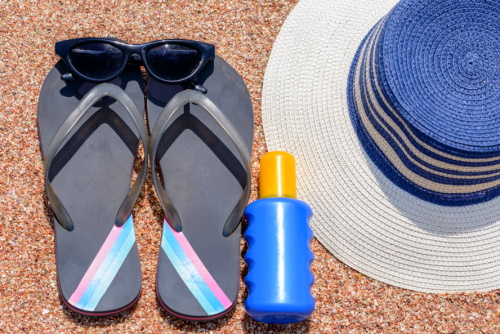Introduction
In minutes of crisis, having the best devices can indicate the difference between life and death. Cardiopulmonary resuscitation (MOUTH-TO-MOUTH RESUSCITATION) is an essential skill that every person need to learn, especially given that it can save lives during emergency situations. This is especially real in Australia, where abrupt cardiac events, sinking events, and sports-related cardiac arrests are sadly typical. Past recognizing exactly how to carry out mouth-to-mouth resuscitation, understanding what vital mouth-to-mouth resuscitation equipment you should have on hand is equally essential. This article delves into the critical tools and tools necessary for efficient mouth-to-mouth resuscitation practices in Australia.
Essential mouth-to-mouth resuscitation Equipment in Australia: What You Should Have on Hand
When it comes to lifesaving measures like mouth-to-mouth resuscitation, having the appropriate devices readily offered is an absolute need. The following things are vital for anybody looking to be Visit this site planned for emergencies:
1. Automated Outside Defibrillator (AED)
An AED is a portable gadget that can evaluate heart rhythms and deliver an electric shock if required. It's critical in cases of abrupt cardiac arrest.

- Benefits of AEDs: Quick access to an AED dramatically increases survival rates. Where to Locate AEDs: Lots of public locations in Australia are equipped with AEDs, including shopping center and schools.
How to Make use of an AED? Making use of an AED is simple:
Turn on the device. Attach pads to the individual's bare chest. Follow voice triggers for analysis and shock delivery.2. Mouth-to-mouth Resuscitation Masks and Barriers
These tools protect both the rescuer and target throughout mouth-to-mouth resuscitation.
- Types of Masks: Pocket masks with one-way valves are prominent choices.
3. First Aid Kit
A thorough first aid kit must have fundamental clinical products like plasters, antiseptics, handwear covers, and scissors.
- Contents of a Good Emergency Treatment Kit: Adhesive bandages Sterile gauze pads Antiseptic wipes Disposable gloves
4. Individual Protective Devices (PPE)
Gloves, masks, and face shields secure versus contagious diseases throughout resuscitation efforts.
5. Training Manikins
Manikins are important for exercising mouth-to-mouth resuscitation methods effectively and accurately.
- Importance of Practice: Normal training guarantees preparedness when real emergency situations occur.
6. Online Resources for Training
Accessing online courses can aid familiarize on your own with both CPR methods and the latest guidelines.
Understanding mouth-to-mouth resuscitation Techniques
Knowing just how to perform CPR efficiently can considerably affect its success rate:
7. Just how to Do CPR?
CPR entails chest compressions and rescue breaths:
- Compression Depth: The correct compression deepness for grownups is about 5-6 cm.
Table: Compression Deepness Guidelines
|Age|Compression Depth|| ------------------|------------------|| Grownups|5-6 cm|| Youngsters (1-8)|4-5 cm|| Infants (<< 1 year)|3-4 cm|</p>
8. Baby Mouth-to-mouth Resuscitation Technique
This method varies significantly from adult procedures as a result of the frailty of infants:
- Use two fingers for compressions at a deepness of about 3-4 cm.
9. Advanced Resuscitation Skills
For doctor or those seeking advanced training, skills such as intubation or IV therapy may be necessary.

Special Situations in CPR
Certain circumstances call for modified techniques or extra considerations:
10. Sports-Related Heart Arrests
Athletes might experience heart events differently because of physical exertion.
11. Drowning Victims
CPR strategies might require modification based upon water breathing impacts:
- Focus on rescue breathing prior to breast compressions.
Household mouth-to-mouth resuscitation Readiness
Being prepared in the house can conserve lives during emergencies:
12. Developing a Family Emergency Plan
Discuss emergency situation procedures with family members regularly.
13. Storing Vital Equipment
Keep your first aid kit, AED, and other vital gear quickly obtainable at home.
Workplace Emergency Plans
Every office must have a clear method regarding heart emergencies:
14. Establishing Workplace Guidelines
Establish clear procedures for team member to follow throughout an emergency scenario involving cardiac childcare first aid course refresher arrest.
Local Resources for Training and Certification
Taking action begins with education and learning:
15. Local Mouth-to-mouth Resuscitation Classes in Australia
Many companies supply courses customized to various audiences-- be it moms and dads or medical care professionals.
List of Organizations Offering Classes
- St John Ambulance Red Cross Australia
16. Online Mouth-to-mouth Resuscitation Accreditation Courses in Australia
Online alternatives make it less complicated than ever before to learn essential lifesaving abilities at your own pace.

Understanding Certification Validity
Keeping your skills existing is just as essential as understanding them initially:
17. Mouth-to-mouth Resuscitation Certificate Legitimacy in Australia
Most accreditations call for revival every 3 years; check individual training course demands for details.
FAQs
Q1: Exactly how commonly ought to I freshen my CPR training?
It's suggested to refresh your skills every one to two years due to updates in guidelines or techniques.
Q2: Can anybody carry out CPR?
Yes! Anyone can execute hands-only mouth-to-mouth resuscitation despite their certification condition; however, skilled people will be more effective.
Q3: What's the difference in between grown-up and infant CPR?
The major difference depends on compression deepness and method utilized; adult compressions are deeper than baby compressions due to size differences.
Q4: Do I need special devices for executing infant CPR?
Not necessarily-- standard emergency treatment kits are enough; nonetheless, understanding about proper techniques is crucial.
Q5: Is it required to use rescue breaths during CPR?
While hands-only compression has actually been revealed effective for adults experiencing out-of-hospital heart attacks, first aid workshops for childcare rescue breaths stay crucial during specific situations like drowning cases or pediatric emergencies.
Q6: Where can I discover neighborhood classes or accreditation options?
Examine community centers or organizations like St John Rescue or Red Cross; they often use classes throughout Australia!
Conclusion
Being prepared with vital CPR devices not just equips people however additionally fosters a neighborhood all set to react efficiently during emergencies. With sources offered throughout Australia-- from neighborhood classes to on-line accreditations-- there's no justification not to outfit on your own with these lifesaving skills. Bear in mind that learning how to do efficient mouth-to-mouth resuscitation indicates being positive concerning safety and security-- not simply for ourselves however also for those around us that may someday rely upon our preparedness during a moment of crisis!